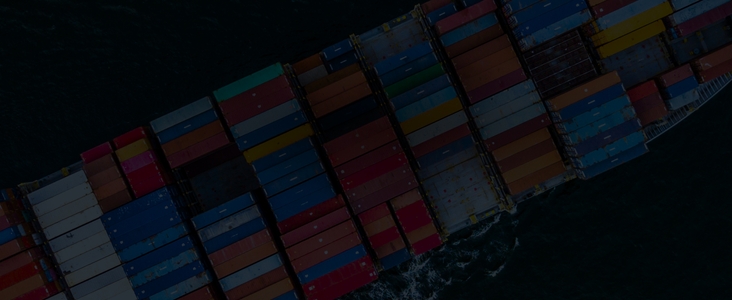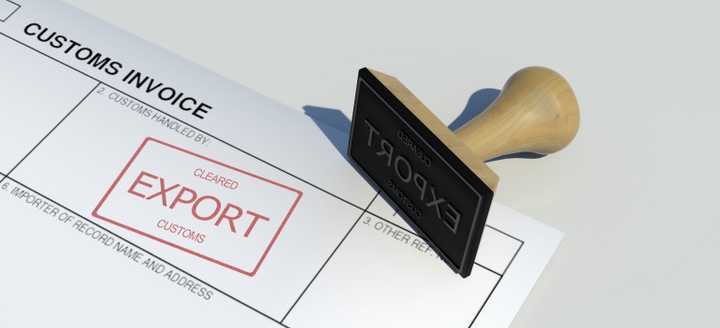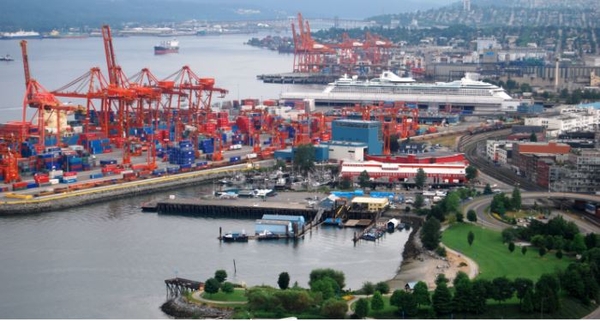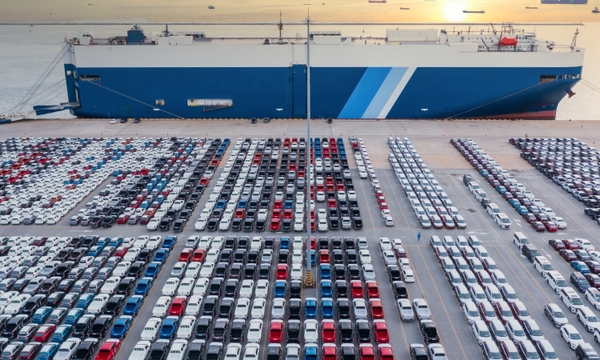
Ocean and Air Freight Shipping From the US to Denmark
FCL, LCL and Air shipping comprehensive guide and instant online quote
Denmark is a country that is highly dependent on foreign trade. The US is Denmark’s largest non-European trade partner with two-way goods trade totaling just under $11.5 billion (USD) in 2018. If you are planning to add to that figure, then you are in the right place.
This page provides useful information for any business looking to import from the US to Denmark. We will cover the different shipping options, costs, transit times, customs clearance, and ports. The guidance we offer here will help you to ship your freight from the US to Denmark successfully.
Know Your Options for Shipping Freight From the US to Denmark
There are only two options for importing from the US to Denmark: ocean freight and air freight. We will explain both of them in detail in the subsequent sections of this page.
Ocean Freight From the US to Denmark
Less than Container Load (LCL): Instead of paying to send an entire shipping container from the US to Denmark, LCL allows you to ship your goods in a shared unit. For smaller shipments, this mode of transport is often the most affordable way to move your commodities for export from the US to Denmark.
Full Container Load (FCL): With FCL, you are paying for the right to use a container exclusively for your cargo. Shippers who want to send larger consignments benefit from the flat rate per container, making FCL sometimes cheaper than LCL.
Air Freight from the US to Denmark
When you have to export from the US to Denmark in a hurry, air freight will undoubtedly be the fastest choice. But, be prepared to foot a larger bill. In most cases, shipping by air is costlier than ocean freight.
How Much Does it Cost to Ship Cargo From the US to Denmark?
The ultimate cost of ocean and air shipping from the US to Denmark depends on many factors. Here is a selection of the most common ones that freight forwarders will take into consideration:
- The type and nature of your cargo
- Mode of transport (FCL, LCL, or Air)
- Weight and dimensions of your consignment
- Origin, destination, and the distance in between.
- Type of service (e.g., Port-to-Port, Door-to-Door)
There’s an important rule of thumb relating to the weight of your goods that you should know. Typically, the price for air freight and ocean freight won’t differ much when you are shipping a consignment weighing 100 kg or less. However, if your cargo is heavier than 100 kg, ocean freight is usually the more affordable choice.
You also need to be aware that most freight forwarders, including Shipa Freight, don’t issue quotes for consignments of 35 kg or less. An international courier service can ship these small consignments instead.
How Long Does it Take to Ship Cargo From the US to Denmark?
The transit time for your goods will be very different depending on whether they are crossing the Atlantic via air or by sea. Air freight can reach its destination in just a couple of days while ocean shipping will take several weeks.
How Long Does It Take to Ship Cargo by Sea From the US to Denmark?
The time taken to transport a shipping container from the US to Denmark will largely vary by port of origin. If you are sending a container from the east coast of the US to Copenhagen, for example, from New York, it can arrive in 19 days. But, if you are sending it from a west-coast port such as Seattle, it will take around 39 days.
How Long Does It Take to Ship Cargo by Air From the US to Denmark?
Air freight from the US can reach Denmark in about four to seven days. For example, the route from Miami to Copenhagen will take four days, which includes the flight time, security and customs checks, as well as loading and unloading. Meanwhile, shipments flown from Charlotte to Copenhagen can take seven days to complete.
Customs Clearance in the US and Denmark

Customs clearance is compulsory for any export from the US to Denmark. To be on the safe side, novice and seasoned shippers alike engage the services of experts, like freight forwarders, for this task. They want to minimize the chances for delays and prefer the guarantee that all formalities will be completed according to the relevant laws and regulations.
Even when you hire a freight forwarder, though, you aren’t absolved of all responsibilities. It’s still your duty to provide the required paperwork for export and import customs clearance. The customs authorities typically ask for the following documentation, as a minimum:
- Commercial Invoice
- Packing List
- Certificate of Origin
- Letter of Credit or other payment terms (depends on the contract between the parties involved)
- Bill of Lading for ocean freight or Airway Bill for air freight (Shipa Freight will provide this for you)
Your freight forwarder will inform you if you have to provide any further documents to complete the process.
To learn more about the different documents required for ocean and air shipping from the US to Denmark, check out our documents list.
Should You Choose Ocean Freight or Air Freight?
Ocean Freight
Most commercial goods cross the Atlantic Ocean as sea freight, loaded inside standard shipping containers. Specialized cargo vessels ship these units from the US to a port in Denmark. Maritime carriers also offer options for cargo that’s not suited for a container. Ask your freight forwarder about a break-bulk shipping service in this case.
In the next sections, we will explain the advantages and disadvantages of LCL and FCL, which are the two alternatives for containerized ocean shipping.
Considerations for LCL Freight Shipping
Benefits:
- LCL can save costs when you are shipping smaller consignments (six standard pallets or less).
- LCL can accelerate your supply chain, as you don’t have to wait to fill a container before you can ship your freight.
- LCL can simplify the drop-off and collection of your cargo as the containers are loaded/unloaded at the warehouse of your carrier or freight forwarder.
Drawbacks:
- LCL involves extra steps that can lengthen the transit time in comparison to FCL.
- The additional handling and movements involved may damage fragile, delicate, or perishable products.
Learn more about Less than Container Load on our dedicated page on LCL shipping.
Considerations for FCL Freight Shipping
Benefits:
- FCL is typically faster than LCL.
- FCL can be more cost-effective than LCL for larger loads (more than 14 CBM).
- FCL isolates your freight in the container throughout the entire journey from the US to Denmark.
Drawbacks:
- FCL always involves paying a flat fee for container shipping, even if you can’t fill the unit.
- FCL might restrict your loading and delivery options, as not all businesses have the equipment to handle containers.
Learn more about Full Container Load on our dedicated page on FCL shipping.
Air Freight
Benefits:
- Air shipping can be nearly as affordable as LCL if you are transporting only a few pallets.
- Air freight offers the quickest transit times, making it ideal for perishable products.
- Airports and airlines provide the highest levels of security, reducing risk for high-value cargo.
- A Buyer or supplier located close to an international airport might prefer it to sea freight.
- It’s very reliable, so you have more certainty with regard to the delivery date of your goods.
Drawbacks:
- Air shipping can be very expensive for large amounts of cargo and heavy goods.
- It may not be a viable option for bulky or awkwardly shaped freight, which won’t fit into the hold of an aircraft.
Ocean Cargo Port Guide
Cargo Ports of Origin in the US
Long Beach
Port Facts:
- Second-busiest container gateway in the United States.
- Situated right next to the Port of Los Angeles in California on the west coast of the US.
- Stretches over 40 km of waterfront.
- Facilities include ten piers and 62 berths.
- 140 shipping lines connect Long Beach to 217 ports worldwide.
Owned By: City of Long Beach. Annual Container Volume: >8 million TEUs. UN/LOCODE: USLGB.
Boston
Port Facts:
- One of the key ports on the Eastern seaboard of the US.
- Accessed by a truck-only haul road and three Interstate highways.
- Container-handling facilities here processed close to 300,000 TEUs in 2019.
Owned By: Government of Massachusetts. Annual Container Volume: >298,000 TEUs. UN/LOCODE: USBOS.
Mobile
Port Facts:
- The only deepwater port in Alabama and a focal point for exports in the state.
- Located on the Mobile River which empties into Mobile Bay
- Planned redevelopment of a 12-hectare site will expand the container handling capabilities.
Owned By: Alabama State Port Authority. Annual Container Volume: >285,000 TEUs. UN/LOCODE: USMOB.
Houston
Port Facts:
- Part artificial and part natural port.
- Busiest port in the United States by foreign freight tonnage.
- Private and public facilities, including a petrochemical complex, stretch over 40 km.
Owned By: City of Houston. Annual Container Volume: >1.6 million TEUs. UN/LOCODE: USHOU.
Port Everglades
Port Facts:
- Tenth-busiest seaport for containers in the US.
- Located in Fort Lauderdale, Florida.
- Used by more than 20 container shipping lines.
- Offers direct access to Florida’s interstate highway network.
Owned By: Broward County, Florida. Annual Container Volume: >1 million TEUs. UN/LOCODE: USPEF.
Other Ports in the US
Besides the five container gateways mentioned above, the following ports are suited for shipping your cargo to Denmark from the US:
- New York
- Seattle
- San Francisco
- Oakland
- New Orleans
- Los Angeles
- Baltimore
- Atlanta
- Charleston
- Norfolk
- Tacoma
- Miami
- Savannah
Cargo Ports of Arrival in Denmark
Copenhagen
Port Facts:
- This port dates back to the Middle Ages.
- One of the largest ports in the Nordic region.
- The port’s container terminal offers a 175,000 square meter storage area.
Owned By: Copenhagen Malmo Port and By & Havn. Annual Container Volume: >194,000 TEUs. UN/LOCODE: DKCPH.
Aarhus
Port Facts:
- Processes over 50% of Denmark’s container traffic.
- Situated at the mouth of the Aarhus River in a bay that shares the same name.
- Infrastructure includes a 1300 meter pier and eight cranes.
Owned By: Aarhus Municipality. Annual Container Volume: >540,000 TEUs. UN/LOCODE: DKAAR.
Flying Your Freight: Airport Guide
Airports of Origin in the US
Miami
Airport Facts:
- Has the largest international cargo volume of all airports in the United States.
- 15th-busiest cargo airport in the world.
- Airport of departure for freight services to 112 destinations around the globe.
Danish Airports Served: Copenhagen. Miami to Denmark Cargo-Only Operators: None. IATA Code: MIA.
El Paso
Airport Facts:
- Vital gateway for West Texas, New Mexico, and Northern Mexico.
- Largest airport in the border region.
- Located six kilometers northeast of El Paso’s city center.
- Boasts an 8,700 square-meter cargo complex.
Danish Airports Served: None. El Paso to Denmark Cargo-Only Operators: None. IATA Code: ELP.
Sacramento
Airport Facts:
- Located 16 km northwest of central Sacramento, the capital city of California.
- Convenient airport for shippers in Northern California, Napa Wine Country, and Lake Tahoe.
- Known as an eco-friendly airport, with 30% of the facility’s electricity comprising solar power.
Danish Airports Served: None. Sacramento to Denmark Cargo-Only Operators: None. IATA Code: SMF.
Philadelphia
Airport Facts:
- Located 11 km from downtown Philadelphia.
- Convenient access via the Maine to Florida Interstate 95.
- More than 500 passenger and cargo flights depart on a daily basis.
Danish Airports Served: None. Philadelphia to Denmark Cargo-Only Operators: None. IATA Code: PHL.
Atlanta
Airport Facts:
- Located just 11 km south of Atlanta’s city center.
- Main export gateway for the southern states of the US.
- Has five parallel runways and extensive refrigeration and freezer units.
Danish Airports Served: None. Atlanta to Denmark Cargo-Only Operators: None. IATA Code: ATL.
Other Airports in the US
In addition to the five airports mentioned above, you can also fly your goods to Denmark from any of the following air-freight gateways in the United States:
- Dallas/Fort Worth
- Charlotte
- Denver
- El Paso
- Houston
- Philadelphia
- Seattle
- Cleveland
- Cincinnati
- San Diego
- San Francisco
- Boston
- Detroit
- Sacramento
Airports of Arrival in Denmark
Copenhagen
Airport Facts:
- Located on Amager Island, just eight kilometers south of central Copenhagen.
- Also serves Malmo in Sweden, which is just 24 kilometers away over the Oresund Bridge.
- Cargo facilities include 17 aircraft stands exclusively for freighters, and three cargo terminals.
Connected Airports in the US: San Francisco, New York, Los Angeles, Boston, Chicago, Miami. US to Copenhagen Cargo-Only Operators: Emirates SkyCargo. IATA Code: CPH.
Why Ship From the US to Denmark With Shipa Freight?
Shipa Freight is ready to ship your ocean and air freight from Denmark to the US. Our extensive experience, paired with a sophisticated, online-only approach puts us at the forefront of freight forwarding.
When you partner with us, you can manage your entire shipping process on our state-of-the-art online platform. There’s no need to coordinate multiple agencies anymore.
Here’s how your business will benefit when you ship with us:
- Instantly receive and compare quotes online.
- Place your booking online, so you don’t lose time.
- Manage all of your imports and exports in one place.
- Know which shipping documents to prepare – always.
- Have customs complexities removed for you.
- Get in touch with our friendly customer service team – available 24/7.
- Have peace of mind that you are always complying with shipping rules and regulations.



